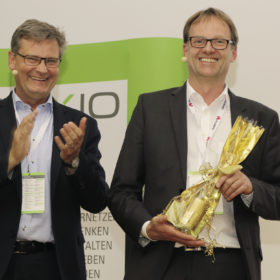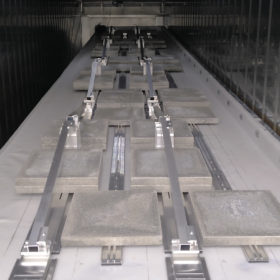Stranded investments, the Energiewende, and blockchain
Jules Kortenhorst, CEO of USA-based Rocky Mountain Institute speaks with pv magazine about the impact of stranded investments, the institute’s partnership with a blockchain startup, and how the Energy Web Foundation can remain neutral.
“It’s all about controlling the hydrogen”
When pioneering and award-winning solar researcher Stuart Wenham passed away suddenly shortly before Christmas last year, some in the PV industry may have wondered what would become of his research into the role of hydrogen in crystalline silicon cells. His daughter, Alison Ciesla is answering that question alongside Wenham’s former team at UNSW, advancing its work into the crucial role of hydrogen in the degradation of silicon cells.
“It’s not surprising, we are starting to feel the momentum”
Meyer Burger looks set to return to profit in the first half of 2018, for the first time in several years. pv magazine caught up with Hans Brändle, CEO of the Swiss equipment manufacturer, to discuss the latest developments on the equipment supply landscape in 2018.
Building a successful ecosystem
India’s government must create a complete ecosystem to ensure the effective on-ground execution of its ambitious solar program, says Chakradhar Byreddy, Director Renewable Energy, UL, Asia Pacific. This includes investing in laboratory infrastructure and skills for technical due diligence, energy yield assessment, and forecasting.
“Now, the Japanese government regards renewables as a major energy source”
Japan is expected to install 6-7 GW in 2018, an impressive feat in the face of a decreasing FIT, cancellation of approved projects, and a sluggish start to its tender program. Here Izumi Kaizuka of leading Tokyo-based market research agency RTS Corporation gives an update on the latest developments in Japan’s PV market.
FERC, capacity markets, and state policy
Energy Innovation’s Robbie Orvis discusses the potential impacts of recent decisions by the Federal Energy Regulatory Commission (FERC) on U.S. solar and wind markets, and what we can expect in the future.
“It is very accurate”
The number of SMEs in the solar sector that can claim three decades of experience is relatively small. Valentin Software, the provider of the PVSol platform, is one such company. And in its 30th year, Steffen Lindemann, Managing Director of Valentin says that the role of software in combining PV into an integrated energy system is continuing to grow.
The caterpillar effect
The solar industry is still debating the extent to which this problem, whereby temperature-related expansions and contractions cause an installed system to move gradually across a rooftop, actually occurs in flat-roof PV systems, and what a practical remedy might look like.
More than two sides to new technology
Working with bifacial: Bifacial modules are gaining ground in the PV market, thanks to their potential for high efficiency and performance without major changes to the module production line. These efficient PV modules need to be used with the right inverter in order to maximize value. Based on empirical data collected by Huawei, this article describes the best inverter features needed for integration into a project with bifacial modules.
More strings to the bow
New developments in inverter architecture suggest that string inverters have charged forwards again to take on the challenge and kick central inverters off the throne in the utility-scale market. Hardware design innovations allowing to cut down BoS capex and improve efficiency of the plants might push string inverters further to take more space in the utility-scale market place.









